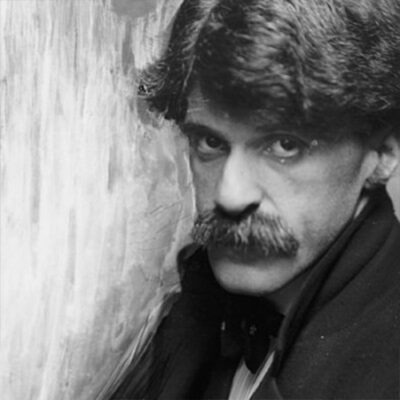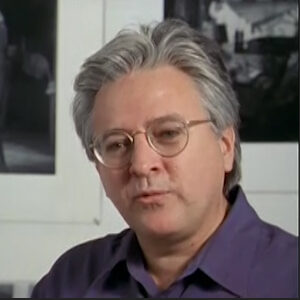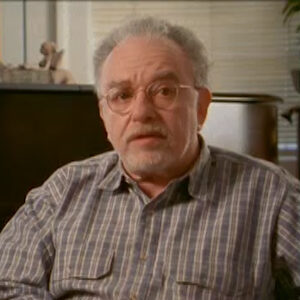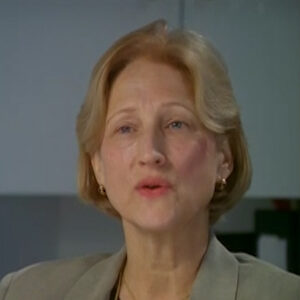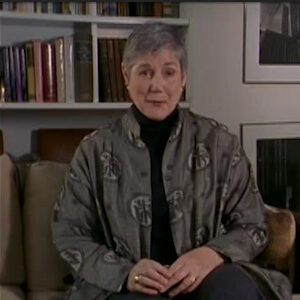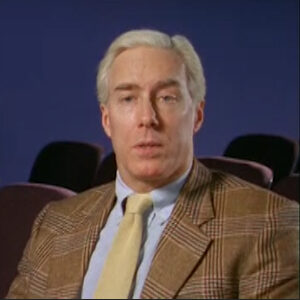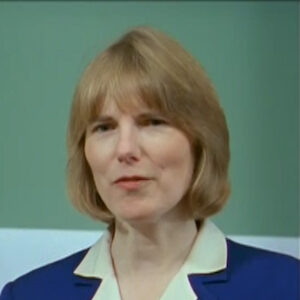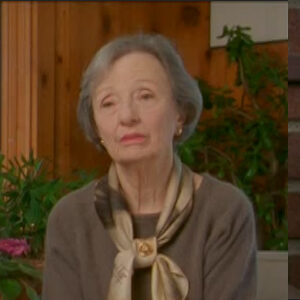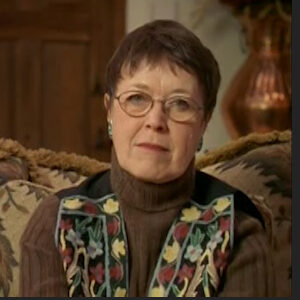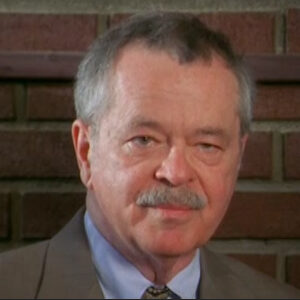Interviewer: Change very much. Yes.
Bender: Eighty, eighty, eighty nine New York in the last decades in the 19th century, consolidated its position as the National Center of the United States. It did this economically. It had great political force and it did it culturally. This is when the great cultural institutions, which had been formed mostly just after the Civil War, got massive new resources. When J.P. Morgan, for instance, became the head of the board of the Metropolitan Museum of Art, started investing and building that building, that collection. It’s when the city consolidated. 1898 is when the city becomes greater New York. And it was meant to indicate that this was going to be a commanding city, not just in the United States, but comparable to cities throughout the Atlantic world. The and the elite of this city, we’re investing in infrastructure, things like the subway, the bridges, but also in the in the physical appeal of the city. The Municipal Art Society is founded in the 80s, 90s and becomes an advocate for beauty in the public facilities of the city. So New York, that has a kind of quality of maturity at that point that it didn’t have before. And Herbert Crowley, one of the major intellectuals of the early 20th century, the founder of the New Republic in the 80s, 90s and early years of the 20th century, writing was a writer for architectural record, wrote an article called New York as the American Metropolis. And he began to pull together those elements that had been realized. But he also felt it hadn’t yet fully realized its potential as a kind of metropolis of the United States, specifically physically changing something about the buildings. Looking very different in the city of New York, grew northward, didn’t always grow northward. And this with the elevated. And then later the subways, this movement north and then bridging the rivers. Things like the Williamsburg Bridge, the Manhattan Bridge and the series of bridges to the Bronx as we’re all done in the period between the late 90s and World War World War One.
Interviewer: OK.
Bender: The city began expanding off of Manhattan, beginning with the Brooklyn Bridge. Although there had been the ferries before that, the Brooklyn Bridge transformed the physical shape of New York, Brooklyn in New York, where two of the largest cities in the country. And now they were linked as one. But gradually as you get into the 80s, 90s and nineteen hundreds. The Bronx and Queens become populated. So the city becomes whole. And this indeed was the reason behind the consolidation. In 1898, the city also was a Beaux Arts city in the 90s that the architecture and the famous four of McKim meat and White. Was gave a kind of Beaux Arts standard before that, in fact, Richard Morris hunted, brought the Beaux Arts here. It’s reflected in the Metropolitan Museum of Art. But in many other buildings, including the municipal building, which is built to indicate the greater New York City at the just after the consolidation. But it’s also the moment when New York is becoming dramatically vertical. The elevator was available from the eighteen seventies, but they didn’t quite grasp its potential. The technology was there, but it’s really in the 90s that New York goes upward and the word skyline is first used in 1897 to describe the skyline of New York, which is like a mountain range. In Chicago, they talked about skyscrapers first, but that was an individual building. The thing that made New York so extraordinary in this period was the growth of the skyline. And that is obviously what points toward the future, even as the design with steel traditional, that is the style, I should say, was still traditional. That is a Beaux Arts kind of of of of style the technology and the aspirations reflected in the impulses of modernity.
Interviewer: There’s something about the. The lively cultural scene in the in the early 80s, 90s. What was going on? Was it a cultural desert? New York.
Bender: There’s a tendency sometimes when something good comes later to think there was nothing before. In fact, the groundwork for what happens in the 20th century in New York was largely laid, perhaps, obviously in the 19th century.
Bender: And that legacy goes back, at least to Whitman, who is celebrated constantly by the new generation that comes of age just after the turn of the century. But there were resources in many other ways. I mean, one of the key moments in this history is how the movement of William Deane Howl’s from Boston to New York in the eighteen eighties. And he says that Boston is a kind of death in life. And New York is where the energy is. And the hazard of new fortunes was his effort to try and capture the dynamism and excitement of of New York within the frame of a novel. He’s also someone who picked up on the immigrant writers and writers like Stephen Crane, writers who are writing with a new kind of realism. People often complained about the sunny realism of of haoles. But he was reaching out to these newer writers and forming a new generation, helping to form a new generation with his own influence. There were salons. There’s the Richard Gilder and Helene at Becae, who had a home designed by Stanford White just off Union Square. She was an artist. He was the editor of this prestigious Century magazine. They had a regular salon that artists, writers regularly attended. There were these kinds of things.
Interviewer: We should hold on a second. Sir? Yeah, that’s what I was hoping.
Bender: Well, New York became a mecca for writer, ambitious writers would work their way to New York. Often they were born outside of the city. Stephen Crane came from upstate. Theodore Dreiser comes from Pennsylvania. And they congregated in the area of Washington Square. In a series of rooming houses south of the square and formed a kind of community, they began as outsiders. But gradually were drawn in New York. What they came here for fellow writers. They also came here because this is where the business of culture was. This is where the editors were, the magazines, the critics. And this was important for writers. It was important for artists. It was important for musicians. One could say even I think with fairness, that to speak of American art in the 80s, 90s was to speak of New York art, which was not the case even a decade earlier, where Philadelphia certainly would have been the place people would look. But gradually, people come here, as Robert Honoree moves from Philadelphia to New York, becomes a great teacher in New York. The Art Students League. And this is the kind of foundations that are being laid in the in the late 19th century and the very first years of the 20th century.
Interviewer: I think, frankly, my own.
Interviewer: I was going to thank you for helping me get out. Yes. Yes.
Interviewer: Are people coming here?
Bender: Well, at the end of the 19th century, New York supplants Philadelphia and anywhere else really in the United States is the center of art. So people come to New York. Robert Rock.
Interviewer: OK.
Bender: How do you find Henry? Henry. Henry.
Bender: At the at the end of the 19th century, New York becomes American art and artists will move to New York, including someone like Robert Henry, who had been in Philadelphia, which had been the center of art, comes to New York and becomes a tremendously influential teacher at the art students sleep and other artists are moving in the same direction as Trail.
Interviewer: OK, give us that. OK.
Bender: New York becomes the center of of art in the late 19th century. The artists come to New York as it displaces, particularly Philadelphia. And one good example is Robert Henry, who comes to New York from Philadelphia and becomes a very influential teacher at the Art Students League.
Bender: And it was a moral health resort that was outside of the creative New York, outside of the corporate culture of New York. It’s strange, small, crooked streets that traffic couldn’t flow through became a kind of place to pull aside and become critics of the of the world that they, in effect, had grown up in.
Bender: And imagine a newer, more modern world in which sex and family and art would all have a different relation to real lived experience. And this was the kind of life of experimentalism and a great deal of of of fun. One another of them said that there is a kind of it’s a world where the improbable often happen.
Interviewer: Well, tell us something about the would you say the decade of around nineteen eighty two, about 1917. Tell us something about the decade that you think all the time that was particularly exciting in Greenwich Village. And what was the. Actually, the answer is. When what became the sort of intellectual artistic center?
Bender: In the period after, say, eight, no specific date in this early decade, first decade of the 20th century, Greenwich Village became a kind of hub, a center for a new kind of culture in New York.
Bender: It was in opposition to the dominant, what I would call brownstone culture of Victorian America or of bourgeois New York. And it was that the next generation, a group of of of men and women who thought of themselves as a generation in rebellion against their bourgeois parents. They were the first to grow up in this sort of families, the consolidated, wealthy, sophisticated bourgeois families. And they wanted something more real, more vital. And they found that in Greenwich Village. Greenwich Village was one of them commented it was a moral health resort that was outside of the grid of New York, outside of the corporate culture of New York. It’s strange, small, crooked streets that traffic couldn’t flow through became a kind of place to pull aside and become critics of the of the world debate.
Bender: In effect, had grown up in an imagined a newer, more modern world in which sex and family and art would all have a different relation to real lived experience. And this was the kind of life of experimentalism and a great deal of of of fun. One another of them said that there is a kind of it’s a world where the improbable often happens. And there was a kind of special generational excitement in in Greenwich Village at that time.
Interviewer: Could you tell us some of the. Some of the people and some of the. Some of the influential publications.
Interviewer: Oh, yeah.
Bender: The Greenwich Village cultural scene really focused in the precinct of Washington Square itself just off of Washington Square and one block of McDougald Street. There was the Provincetown Players, the liberal club, Polly’s restaurant, Albert Barney’s Bookstore, which later became a publishing house which, along with Alfred Chernoff, published much of the new literature of the Greenwich Village rebellion. And for that matter, the Harlem Renaissance. So there is this little corner. The park itself was a place of meeting, a place of various kinds of cultural manifestations.
Bender: At one point, John Sloan, the artist, climbed up with a group of friends to the top of Washington Square arch and lit upon fire and declared it the Republic of Bohemia. This is the kind of playfulness that that early Greenwich Village had. And this played itself out in some of the publications, most notably the masses, which was a combination of political radicalism, edited by Max Eastman, who in the first issue under his editorship said This is a magazine of rebellion, not reform.
Bender: And the artists drew cartoons, famous artists. John Sloan was the art director. Stuart Davis was one of the artists. A number of of of important artists were working for it.
Bender: And it was political in a very playful way. And one of the things that happens with World War One and both the repression that comes from the government, but also ironically, this is the success of the Russian Revolution, makes talk of revolution suddenly much more serious. It’s a real thing in the world. What’s that happens?
Bender: And some of this freedom of being an easy socialist and an easy revolutionary becomes more complicated, both because the government is on their backs, but also because they may be talking about real history. Now.
Bender: Something about the political tone that actually that there was kind of a. Leftism that was not, you know, you can be a leftist and still publish some of the accounts, things that the connection between politics and art and this general left is home. I think it’s important that the socialists were very successful at that time.
Bender: There was in this world of Greenwich Village, a kind of almost congenital leftism, an assumption that the new culture and the new politics went together. There were the lines between socialism and reform ism and other kinds of left positions, feminism. We’re all intertwined with each other. There was more fun in the broad front of challenging the old ways and bringing a new world that they saw a dawning together. The same is true in the cultural realm, in the cultural realm. There were not the same kinds of divisions between different art forms that people who were artists were working on magazines with political activists and working with playwrights and actresses and actors in in theater and all around. This was a kind of community of the arts and a community of politics. And they merged at two different levels across the spectrums of each of those that the two overlapped themselves.
Interviewer: Could you tell us something about the baby, the seven arts?
Bender: The seven arts magazine, was it very short lived? Very remarkable magazine. It took its inspiration on the one hand from Walt Whitman, but also from European modernists, from nature, from French painters, from philosophers in general in Europe.
Bender: And it it’s, as the title suggests, the seven arts. It took the whole spectrum of the arts as its domain and a progressive politics. And it was a remarkable fusion of progressive politics and advanced art. And it lasted for only 18 months. But it had a brilliant run. It was it collapsed, really, with the coming of the war and its collapse. Did mark an end to a particular era? A particular moment in the history of Greenwich Village Connection.
Interviewer: Stieglitz.
Bender: Rosenfeld.
Interviewer: And the world waterfront here, right?
Bender: The seven arts magazine was located right around the corner from Stieglitz to ninety one gallery. And there was a lot of interaction between the seven arts group, particularly Paul Rosenfeld, who became very closely involved with Stieglitz and Waldo Frank as well. We’re deeply influenced and influenced Stieglitz. So there was this cross between these this literary world of the seven arts and their writers and key critics and Stieglitz and his world of the two ninety one gallery.
Interviewer: Tell somebody what what happened. A little bit about the anti-war, the anti-war movement.
Bender: The Greenwich Village intellectuals, for the most part, were opposed to American entry in the war. And when the United States did enter the war, they bitterly opposed that.
Bender: But there was a division within the group. And I guess what one could call some of the older and more mainstream parts of the New York intellectual world associated with the New Republic tended to support the war. The seven arts, the specifically seven arts group, tended to oppose it. And the most important of these opposers was Randolph, born a brilliant young critic and in a terribly powerful essay entitled The Twilight of Idols.
Bender: He criticized John Dewey’s decision to support the war and what what Bourne effectively does in that essay is announces that the notion that a progressive politics and a progressive art could move hand in hand, maybe can’t move hand in hand. And maybe the artistic sensibility has to criticize the political sensibility and even of the so-called progressive politics. And that shifts the ground to to a later period after the war.
Interviewer: It’s also what happened. And time work and through oppression. I mean, what happened at the border? That they they seized publications.
Bender: Let’s a little bit complicated in that seven arts case. It’s not clear that the suppression ended it squabbling among the groups that coincided with the thing. But the masses is clear. That was closed down by the government. But anyway, the crisis of the war really had a tremendous impact on the intellectual world of New York. It divided the the intellectuals between those who supported the war, those who not, who did not. It also was a moment of massive government crackdown on critics and indeed, the masses was closed down by the postmaster general for sedition. There was a trial. And in general, come 1919, the so-called Red Scare, when the attorney general came in and closed down and arrested large numbers of radicals from the war time period. So it was a very traumatic period at.
Bender: Many intellectuals and artists in the period before the First World War identified themselves as anarchists without a whole lot of specification of what they meant. They would still probably vote for Eugene Debs, the socialist candidate, in 1912. Pointless. The Socialists had serious national political movement. But by anarchism, they didn’t mean a kind of doctrinaire anarchism. I don’t think I think it was a kind of just a rebellious spirit and anti-establishment spirit that an intense individualism. It found a vocabulary in anarchism, but there was a spectrum. There were also anarchists who were much more politically active. And indeed, such anarchism, particularly if it came out of the voice of the mouth of an immigrant anarchist, might be subject to state scrutiny.
Bender: But for highly cultivated, mostly wealthy intellectuals in in New York, this kind it was an easy kind of vocabulary of anarchism people.
Bender: Well, the world of Greenwich Village was much populated by anarchists. They often showed up at Mable Dodge Lewine Salon and Big Bill Haywood, the wobbly leader of the Wobblies, were subject to crackdowns.
Bender: This is a real workers organization. There’s Emma Goldman who’s speaking about women’s rights, free love and social transformation. She, too, was the subject of government scrutiny. And there was a whole a whole world of this kind of, I guess you’d call it agitation under the umbrella of anarchism.
Interviewer: Let’s hope that the old ladies home. Yes.
Bender: Stieglitz can be included among those who identified themselves as anarchists. But again, I would want to use the kind of phrasing that this anarchism for him meant, a kind of intense individualism going his own path, a kind of sense of continuous rebellion, rebellion against his background, rebellion against anything that is conventional.
Bender: And I think this was a very common spirit among many of the intellectuals and artists of that period.
Interviewer: What were some of the other currents outside? Kind of modified a little bit about mikovits expansion of our interpretation of.
Interviewer: Up until fairly recently, American Americans, generally art historians, historians, would have thought of modernism as a very narrow span of artistic forms.
Bender: But more recently, the notion of modern art and modern culture has been greatly expanded. And once you begin to do that, you see that Stieglitz is one of several threads of of modernism, one or modern art. We might want to call his modernism or it may not be helpful to give that special title to any one of them, but to recognize a whole series of artistic gestures that are self consciously modern. It can range from the Ashcan school and the people like John Sloan and his group, the eight, as they were called. It can be something like Duchamp, who is not exactly in the Stieglitz camp, but opens up another domain. Yet another area is the argument that the Harlem Renaissance is a movement of of of moderate American art. And one could probably go on depen Dada in New York, which is part of the Duchamp world.
Bender: All of these are are.
Bender: Variant on American modern art during this period in the first few decades of the 20th century.
Interviewer: Was that allowed for you? Yeah. OK. OK.
Bender: One one can think of Stieglitz as a kind of cultural promoter, organizer, patron. But he was not the only one doing this sort of thing in the era of World War One and before and after. One thinks that someone like the Walter Arenberg circle, which is an uptown circle, which has a different pattern of connections in New York, goes downtown to Greenwich Village, but also uptown to Harlem. And it became a kind of hinge between downtown and uptown Harlem. And a good example of this is Gertrude Stein, Virgil Thompson collaboration and Four Saints in three acts, which included African-Americans, singers in the in this opera, which was really staged out of the Aaron Brick Salon. That also included Duchamp was also a connection there. So there were other locations that took a different kind of New York than Stieglitz. Stieglitz was not involved in that part of the culture of New York.
Bender: In the in 1890, Americans, an American artists and intellectuals, saw themselves in some as provincials is as junior partners in the work of culture. They were also closely identified with British culture. What happens between 1890 and World War One or 1920 is a sense that there’s a bigger world than the Anglo American world, and they become interested in the intellectual and cultural world of the continent. France and Germany in particular. And this is a wider cosmopolitanism. At the same time, there’s a kind of national aspiration. So cosmopolitanism and nationalism are not incompatible. For the group around Randolph Bourne in particular, who is the principal theorist of this position, and they began to think of the United States not as inferior, but as a culture that is an alternative and fresh new, more like what the future is going to be like. And it was one that was going to be shaped by immigrants as well as the what had been the kind of mainline establishment that that this new generation was challenging. This new generation was fascinated by the vitality of the Lower East Side. They they thought that here was a kind of new source of energy and for that matter, identity. And in a famous essay, Randolph Bourne spoke of a trans national America that was continually in the making and would be what the immigrant will make it, not what the Puritans established two centuries before.
Interviewer: Tell us a little bit a little bit more on how this. This continued in in the 1920s and this whole thing of the search for an American identity. And the artists and Stieglitz is also very, very much.
Bender: After the war, a wide range of American intellectuals searched for a distinctive American style. There were a variety of efforts, Stieglitz and the group around him. People like Scheeler, certainly Georgia O’Keeffe, was deeply interested in establishing some kind of an American approach to painting, but also literary people like Lewis, Mumford and Van. Brooks talked about the notion of a usable Pash Constance work as well. So there were a whole and the one could go on, but there were a series of efforts to relate the American past to an American future. Some distinctive American, I guess I’ll call it a style of of art.
Bender: One of the fundamental suppositions of the modern is a tremendous break with the past. And one of the things World War One represents is that kind of break with the historical culture of Europe. It was a devastating war that most of the rest of the 20th century is playing out of the consequences of that war, the terrible things that came afterward, but also within the domain of culture. It wasn’t that this notion of the modern was invented at the time of World War One. It it surely precedes it.
Bender: But the breadth of experience of that kind of break that the apparent collapse of civilization had a way of making the notion of the modern seem experientially real to large numbers of people in the way it hadn’t been before.
Bender: It also, from the American point of view, opened a space for the Americans who didn’t go through this trauma in the same way. It also meant that many key European intellectuals and artists came to New York into the United States with especially New York and had interaction with Americans.
Bender: And in fact, many of them do shop copy. Most famously said, you know, here’s where modernity is. It’s not back where we are. And I think that many Americans who went to Europe at this time, Josef Stella being an excellent example, he goes and he discovers that, in fact, I’m looking in the wrong place for what the new is going to be. It’s back where I came from. So there’s a whole shifting of the.
Bender: The Great Depression was one of those truly cataclysmic events in American history.
Interviewer: OK.
Bender: The Great Depression was one of those truly cataclysmic events in American history. Massive numbers of people were unemployed. The whole economy seemed to have collapsed. There’s not the question of the stock market falling. There’s the question of all kinds of people, not just people at the bottom of the social scale, but well into the middle classes, finding themselves unemployed without the resources to maintain their homes, losing homes, losing farms. And no one could be unaffected by this transformation.
Bender: What happens in the coming of the Roosevelt presidency and the New Deal is a series of government programs to try and restore this method, mechanisms to try and maintain people’s homes. The Works Progress Administration, which provided jobs for a whole variety of workers, including artists, which is terribly important because by employing artists, by saying such a thing as an unemployed artist, implies there’s a career as an artist which had never been really acknowledged in this country. And so artists somehow got legitimacy, not just painters, but actors, directors, film makers, all kinds of arts. We’re put up a part of the WPA employment practices, but even then, not everyone could be employed. There were efforts to try and save farms. There was a great effort to document the depression by the government. The Farm Security Administration sent out some of the greatest photographers of our time, Dorothea Lange. Perhaps most importantly, her extraordinary photographs showing what the conditions were in America, riders traveled around the country. Edmund Wilson, the great critic, traveled around the country trying to get a take on what was happening in America, and the whole intellectual world moved left. As Wilson said, this depression shows that the whole system is just corrupt, bankrupt, collapsed. And let’s start over. So there’s a kind of drifting to the left, not some. It’s specifically into the Communist Party, but it’s not so much what specific position people found, but a general Popular Front left that organized writers and artists organized in the thirties. And they wanted their art, both in its subject matter and in some of its impact, to have something to say and hopefully even do with the crisis that the society was going through. Stieglitz Oh, there’s a person of the left and and certainly concerned by all of this. Couldn’t find a way to relate to all of this. I’m not sure what the reason was, but one probably has to do with his anarchist spirit, his intense individualism, that that was somehow out of place with the collectivist spirit that was emerging in the 30s in an odd way. Although he is politically in a different place, he was it far from Herbert Hoover who couldn’t respond to the Depression either because of his strong commitment to individualism.
Interviewer: Something about close friend activities at this time,.
Bender: I’m afraid I don’t know enough.
Bender: I don’t know enough about Stram.
Interviewer: You know, for this guy, I think we got it good.
Bender: OK.
Interviewer: The Provincetown players and the practice.
Bender: He admits the Provincetown Playhouse represented a truly fresh voice in American theater, and it. Brought a kind of re new realism to American theater in New York. But I think the important thing about it was it was a community. It was a community of directors, actors, writers. And the thing about it, it nourished it nourished the various members of this group. And in the case of O’Neill, who certainly the most famous person associated with it. It meant that he always knew there was a place for his play to be performed. And there is a certain level of commitment and talent that would be there. This is something that is really quite important in the world of art. Particular arts that you need if you’re a writer and editor who will support you will be there. If you’re an artist, a gallery that will show your work. If you’re a playwright, a theater that will perform your work so that you can keep working in that kind of context. That, in fact, is one of the things Stieglitz did, most importantly for the cluster of modernist with whom he’s identified his gallery and not just the gallery, but his support. Those he supported. He really supported. It’s true. Those he didn’t support he had. He was also a man of many conflicts. But those who he supported, they had a place they had someone who counseled them, who judged the kind of critically judged the kind of work they were doing and gave them the opportunity to show it and to show it when they were ready to have it shown. And I think that is a that is one of the key roles that a certain cultural leader can play. And it’s probably interesting to think of Stieglitz somewhat like a book editor. In a way, he’s someone who’s working with the artist, an advocate, but also a critic at the same time.
Bender: Can you ask me the question now?
Interviewer: Yes, actually, a little bit about. Steve, evaluate yourself, saving everything, Stieglitz from the very beginning.
Bender: Saw his himself in kind of missionary sense. He became a missionary for a new art, a new America. And he was very he had extreme self-confidence. He had a sense that he was doing something historically significant. He saved everything. He promoted a movement that which he was at the head of. And a person who does that and does it well is he did it almost writes their own history. So he left not only the documentation, but all the frames within which the modernist movement with which he was associated ought to be interpreted. And to an extraordinary degree, his own history of himself became the history of modernism. And it’s only fairly recently, really, in the last maybe 20 years, that art historians and cultural historians have come to recognize that there were a number of stories of modernism of which Stieglitz was one. So I guess I would say that his contribution and what we now have to look at a little more critically are both the same thing. That is his strong historical sense of the importance of what he is doing and his ability to articulate his own view as the view of what the modern in America was about. And it was exclusionary, even as it promoted what was unquestionably work of considerable merit. And now I think we’re less comfortable with that exclusionary vision of modernism. The question can be raised whether or not Stieglitz was exclusionary in terms of the people he supported. And I think that one could say yes, but one could also say that he had a particular taste in a peculiar particular sense of talent, and he decided to concentrate his resources, which were indeed limited on those in whom he most fully believed. And in retrospect, clearly, he chose people of considerable talent. No one would doubt that. But in another sense, not so much the sense of the artists he supported, but the ideology of modernism that he promoted. It is the latter one that I think may be seen as exclusionary of denying a certain kind of legitimacy or even notice to other forms of being a modern artist. And that’s the part of his legacy that I think we have to look at now.
Bender: Now, get the credit, really is the streets of Greenwich Village haven’t changed a whole lot since the beginning of the century. One can still see the scale and slowness of life in the village that is so different than the rest of New York. When things about Manhattan as a place of tall buildings, high energy, much movement. But in fact, nestled in the center of Manhattan is this island, an island that one of the Greenwich Village intellectuals called a kind of moral health resort in which things were slower. It was almost small town ish. And one of the ironies is that these writers and artists sought out this small town ish environment in the middle of a large city to become militant modernists and to create a kind of modern culture in the arts, but also in the way they lived. They were they were living life as as an experiment here. And there seemed to be freedom and space to do that. It was a place of cheap rents, a diverse population. It was an immigrant neighborhood as well as a bohemian neighborhood, and for the same reasons that the low rents attracted them both and the in the physical qualities with this kind of setting, it was it was it was a world and a culture of a great deal of of of parties and movement and familiarity with people on the street scene, people being together. And it produced all kinds of crossovers, crossovers between politics and art within politics. Various political positions could collaborate without too much division. And likewise, in the arts, artists could perform and play as amateur actors in plays. Writers could work with artists. Artists could illustrate magazines that some of the sort of self-contained autonomy that the modern art forms would get. After World War One, it would become especially crystallized after World War Two that didn’t yet define the world of the modern in New York just after the turn of the century.

